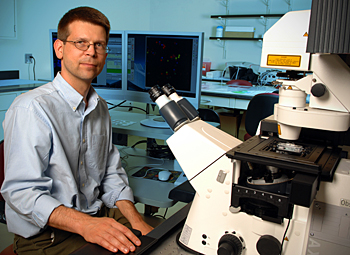ZEISS 3D Cryo-Workflows – High-Content, High-Resolution, High-Flexibility

Kirk J. Czymmek
ZEISS Research Microscopy Solutions
Tuesday February 26, 2019 – 12PM
Cryo Microscopy is becoming the technique of choice for high-resolution data acquisition from functionally relevant biomolecules. One challenge has been understanding the structure/function of biomolecules in their native biological context in situ as opposed to collecting data from isolated proteins or protein complexes. To circumvent this problem, researchers have incorporated focused ion beam scanning electron microscopes (FIBSEM) to create thin lamella in vitrified cells prior to Cryo Electron Tomography. Although insightful, demonstrated workflows to target specific regions of interest are technically challenging and therefore result in low yields of useful data. Recent advances now show that higher specificity and throughput can be achieved using a correlative cryo approach starting with the ZEISS Airyscan technology on a laser scanning confocal light microscope equipped with a Linkam cryo stage. The high sensitivity and signal-to-noise ratio (SNR) and super-resolution capabilities of the Airyscan detector enables us to target specific subcellular regions within cells using fluorescent tags in 3D that serve as a map to easily relocate the same structures on the SEM. Combining this workflow with a unique in-lens detection system in the ZEISS CrossBeam FIBSEM to detect unstained structures with high contrast 3D volumes within vitrified cells allows us to generate lamella with high data content and accuracy for subsequent electron tomography. This presentation will highlight the new cryo approach to “connect” the light and electron microscope platforms in a targeted correlative multi-scale approach with special emphasis on advanced cryo-light -> cryo-FIBSEM -> electron tomography workflows.

